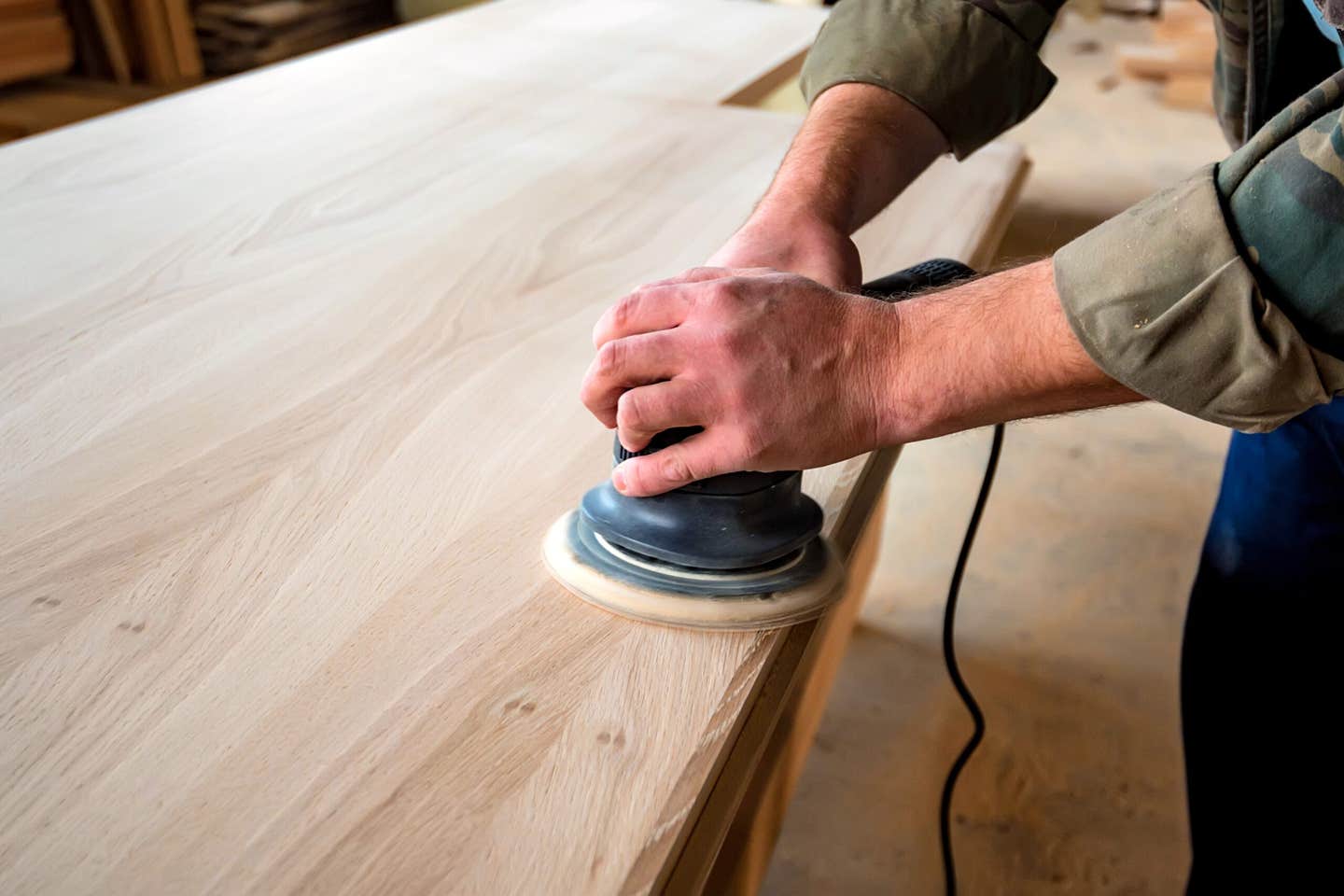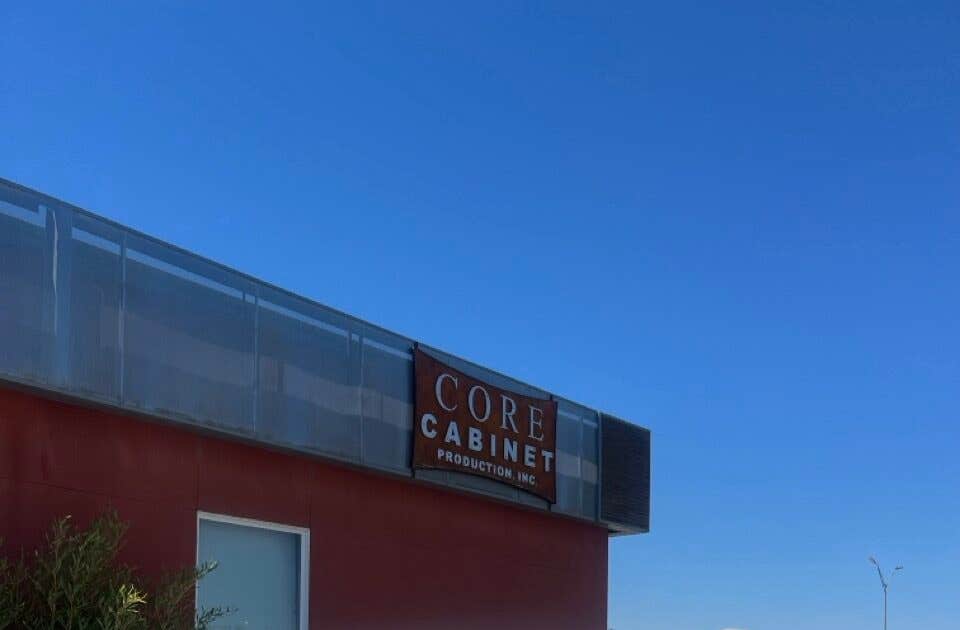Partners for change
In December, three companies with CNC connections got together and presented a productivity workshop in California.
In December, three companies with CNC connections got together and presented a productivity workshop in California. Experts from Lockdowel, Laguna Tools and Microvellum met at the Laguna Tools showroom in Irvine and showed shop owners and managers how an integrated approach – using the best technologies from each supplier – can have an immediate and meaningful impact on production.
The fact that manufacturers of machines and software are working together to provide solutions was also the basis of an interesting blog on Jan. 4 on the AXYZ website (axyz.com). Titled “The case for open architecture vs. proprietary CNC technology”, it underscored the fact that shops are now using CAD/CAM programming that comes from a variety of sources.
“In a CNC system,” the blog reads, “open architecture provides for future modifications and upgrades to meet the needs of end users as their businesses and customer bases evolve. Proprietary technology, on the other hand, is often limited to one specific programming language. As a result, the option of switching to newer and possibly more productive programming systems may not be available, which makes the CNC system more costly in the long run, especially if additional equipment must be brought in to handle expanding needs.”
It’s a good point, especially as the field of CNC manufacturers catering to larger shops continues to grow and smaller shops continue to trend toward outsourcing, while more and more apps reach across software boundaries.
Laguna Tools (lagunatools.com) recently introduced its new Lockdowel boring/inserting machine at AWFS 2017. The LD4 drills and inserts Lockdowel’s E-clip products, and when used in conjunction with one of Laguna’s SmartShop CNC routers, creates a complete fastening solution for cabinets. It has four zones and two drilling units – one for 5 mm, and one for 8 mm – and its two vibrating barrels have the ability to insert 30 mm or 40 mm spring pins and E-clips, H-clips or channel locks.
CNC Factory (cncfactory.com) has also introduced a Lockdowel automatic inserter machine, and its model has four stations. The company has worked with Lockdowel to build the Scorpion LDR that has automatic material loading, laser guided robotic measuring, advanced wireless barcode reading - and a single employee can run it. The Scorpion works with software programs such as Cabinet Vision, Mozaik, Top Solid, Solid Works, Microvellum, Imos and more, and it provides an integrated platform for growth in robotic lean manufacturing.
Software
innovations
Software is becoming as much a key to CNC in larger shops as the actual machinery, and C.R. Onsrud is one industry leader that recognizes that. The company’s newest open-architecture software, Osync Machine Analytics 2.0, is designed to give woodshop managers a customizable interface, providing both real-time and archived data about machine stability and performance. The original Osync has been functional for a couple of years, so it’s already shop-tested. In the spirit of integrating resources, Onsrud used the new version during AWFS to monitor not only its own machinery, but also that of its strategic partner, the IMA Schelling Group. A third partner, Eurosoft, integrates Osync into workflow software so that end-users get better predictive capabilities.
Komo Machine (komo.com) offers its Machine Manager 4.0 software. The package is a powerful app that allows the customer to keep track of machine productivity and tool life by sending real-time, configurable updates to plant management. Komo recently introduced its new Xtreme 5-Axis CNC, which was developed specifically for woodshops that require machining flexibility and more Z travel. The company also has a new Autoloader 2.0 with an offload conveyor for panel processing and nesting applications.
Carbide 3D has uploaded a new version of its Carbide Create package with a feature that the company has been planning for a while: Texture Toolpaths. This can create textures on parts – anything from simple hatching to a hand carved look – which is milled by moving the cutter in a sweeping motion into the stock, and then back out. Like V-carving, this motion gives the finished parts a 3D look without the time required for 3D machining.
Thermwood (thermwood.com) makes the Cut Center, which can operate in the traditional CNC manner but can also cut parts with no custom programming, no computer and no software. Just select a project from the library, plug in the size and start feeding material to the machine.
The new Nextec software from Holz-Her (holzherusa.com) allows a woodworker to do similar things. Once a raw panel is in position, the CNC does the rest – perfect formatting, drilling of vertical holes and grooves, and even milling Lamello P-System cutouts on the edges and in X and Y directions on the surface. There’s no re-clamping, and no loss of time or quality.
New machines
Along with software, robotics are also making some big waves in the world of larger CNC routers.
For example, the new Python XPR from CNC Factory works in either manual or robotic mode and has robotic loading and unloading. Equipped with a HSD 12-hp air-cooled spindle and a rotary ATC 12-tool carousal, the Python offers rapid travel of over 1,800 inches per minute (IPM). It will complete long, complex, multi-tool tasks from one sheet to 50 sheets, and do so automatically at the push of a button.
That kind of speed is becoming a reality in more and more machines. For example, MultiCam’s top of the line machine has a cutting speed up to 2,200 IPM, and a rapid traverse rate of 3,000 IPM. The company (multicam.com) also has a 7000 Series router that can be customized with up to 20 horsepower, and a range of work areas from 5’ x 5’ on the small end to 10’ x 50’.
Upgradable options are part and parcel of buying larger CNC machinery, and they turn buying a machine into a very custom experience. For example, NewCNC (newcnc.com) offers fully automated lines with label printing, plus machines that unload the table. The company’s 5-axis machine is designed to machine five faces of a workpiece as well as perform normal 3D machining. It’s available in single and twin table configurations, and includes a modular fixturing system that incorporates both mechanical and vacuum clamping.
The new Profit H08 21.31 CNC machine center from Felder USA (felder-group.com) is designed for nesting and automated efficiency. It has 15 tool positions, a drilling head with eight spindles, and zoned vacuum controls.
Masterwood CNC (masterwood.com) has introduced new glue injection and dowel insertion capabilities for its model TF100; new nesting capabilities for five of its MW machines; a new Project 351 CNC that has large tool magazines and a pod & rail worktable; and, of course, new software: the latest version of Master 3D is now included in the price of every Masterwood machine.
SCM Group has acquired a controlling share of Grimme, a manufacturer of 5-axis machines. Among its newest innovations is a gantry rotary table milling machine with an inclined bed.
Thermwood recently introduced its new Multi-Purpose 90 that takes technology a little farther: the machine is 3D laser-calibrated to assure the most accurate absolute positioning and repeatability. This is a heavy-duty, five-axis CNC designed for high-speed trimming and pattern machining. It’s available in single or dual moving aluminum tables and is capable of full 5-axis simultaneous motions with extremely fast accelerations.
Familiar names
Legend has it that CNC routers were invented in Japan back in 1968 by Isao Shoda, and the company that he founded (shoda.com) continues to innovate half a century later. Shoda’s latest Planet Blue model is completely shrouded for a dust-free workstation. In addition, the entire drive system is also protected from fines. It has a new spindle change system that makes quick work of the task, and it uses shop space very efficiently thanks to a compact physical footprint. Three models are available for different work scales.
Hendrick Mfg. (hendrickmanufacturing.com) offers two 5-axis CNC options. The HSR-V comes as a twin moving table model, or a single stationary table with moving gantry. And the HHD-V offers real-time tool center point rotation, and all 5 axes are fully synchronized.
Nextech Machinery (nextechmachinery.com) introduced its new R400 moving gantry CNC router about a year ago. The machine has auto loading and unloading, remote diagnostics that ensure maximum uptime, and available label printing. The R400 is the latest in an extensive portfolio of the company’s machines that includes flat-table CNC routers either with or without automation, flexible pod & rail centers, space-saving vertical drilling and routing machines, and 5-axis machines with moving table or gantries.
SNX Technologies (snxtechnologies.com) supplies the nVentor line of CNC routers, which have a phenolic vacuum table mounted to a cast iron steel plate, and Syntec controls. The positioning bearings, ball screws and racks are all serviced by an automatic lubrication system that is activated directly by the machine control.
Anderson America (andersonamerica.com) has been building CNC machinery for 24 years and has placed more than 19,000 machines worldwide. One of the latest is the Selexx Plus 512 TC+D, which is a moving gantry machine equipped with a 12-hp spindle, eight-position tool changer and numerous features.
Diversified Machine Systems (dmscncrouters.com) builds a variety of 5-and 3-axis machines, and specializes in custom solutions. Routers are available with a single or twin moving table, moving gantry and overhead gantry configurations.
Techno CNC Systems (technocnc.com) introduced the new HD II large format CNC router about a year ago. It includes a 12-hp HSD automatic tool changer, eight-position tool rack and a pneumatically actuated vacuum hood that concentrates airflow on the spindle tool. It’s available in 4’x4’, 4’x8’, and 5’x10’ sizes, but larger sizes are available upon request.
The Cobra Elite from Camaster (camaster.com) is on the cusp between medium and large shop machines. It can handle production runs (up to a 16-hp spindle is available), but it can also be bought on a limited budget and then upgraded over time. The CR-510 model has a cutting size of an inch over 5’x10’, and some of the options available are automatic tool changing, multiple spindles, drill banks, aggregate heads, knives and an extended gantry.
CNC enhancements
Speaking of upgrading, Vision Engraving & Routing Systems has announced that its CNC routers with a vacuum table option will now come with a Black Box vacuum system. The Storm system will be packaged with Vision’s 2550, and the larger Hurricane will serve the VR48.
The new G2 Combo from ETP Transmission AB gives a woodshop the benefits of using a hydraulic chuck for router bits and a hydraulic arbor for profile tools – at the same time. One can also use reduction sleeves in the 16 mm chuck and run several smaller, frequently used shaft sizes.
An upgrade from Tormach takes the form of a new power drawbar that is designed to reduce tool change time. Simply press a button to swap out cutting tools.
An upgrade for smaller machines from Next Wave Automation promises to open up new possibilities for larger CNC machines. Called Virtual Vision 3D software, it’s a 3D laser scanner that can be attached to any of the company’s CNCs, and will be available this spring. It allows the user to quickly map any object that is placed on the CNC table in 3D to create a model. Users can then accurately engrave, carve or 3D print a duplicate using that 3D model.
This article originally appeared in the February 2018 issue.







